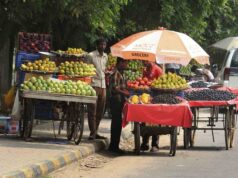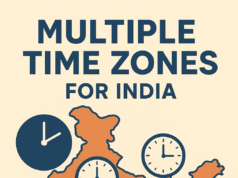A trip is on the horizon. A familiar ritual for millions in India would be to open a travel website, enter a string of city names, and start tracking a list of flight prices. Most fares are high beyond explanation, with any reasonable option being a red-eye flight, leaving the consumer disheartened.
India is the world’s third-largest aviation market. But this market is turbulent, unreliable, and plagued by distortions. For any story of growth there are balancing tales of shutdowns of large, and seemingly capable airlines like Kingfisher, Jet Airways, and Go First. How is this discrepancy explained?
The answer may lie in a complex web of problems. The root cause being: operation costs are high and a large component of it is imposed by the government.
The single biggest cost component eating into airline profits is Aviation Turbine Fuel (ATF). It is about 40-50% of an airline’s total operating costs in India. ATF in India is subject to a complex and overlapping tax structure that is often onerous for airlines and extractive in nature.This system is distortionary and a large burden is borne by passengers.
ATF is taxed twice. Central excise duty by the central government, and state VAT by state governments. ATF has been excluded from The Goods and Service Tax (GST) regime that was supposed to streamline such tax codes.
Airline ticket prices do not consist of just the ATF tax component, but also an additional layer of tax, the GST. GST is levied on the total ticket price, 5% for economy, and 12% for business class.
Before the advent of GST, airlines could set off the central excise duty paid on ATF, against the service tax that was owed on ticket sales. Following the enforcement of GST, that option is no longer available. So, there are at least three levels of taxes for airlines in India at present.
It is also surprising that domestic fares are becoming comparable to international fares. Flying to Bangkok from Delhi can sometimes be cheaper than flying to Bengaluru. There are three main reasons behind this.
First, for the aircrafts flying abroad, ATF is not taxed. For flights departing India, the ATF loaded is treated as a “deemed export“, and is completely exempt from both central excise duty and state VAT. This means an airline pays significantly less for the same fuel when flying to Dubai or Bangkok, when compared to flying to any domestic airport like Bengaluru or Vizag. This is the primary burden that domestic passengers bear.
The second reason is the Route Dispersal Guidelines (RDG). This is a regulatory burden imposed only on domestic operations. It requires airlines to operate a certain percentage of flights on routes connecting remote regions to ensure national connectivity. Many of these routes lack commercial viability and operate at a loss. To compensate for these losses, airlines engage in cross-subsidisation, charging slightly higher fares on high-demand routes like Delhi-Mumbai. In essence, a small portion of a ticket price on a busy domestic route also carries a hidden subsidy that helps pay for a flight to a remote town. There are no RDG burdens for international flights to comply with.
Prices also depend on the state of competition in the overall market. This is the third important reason behind high domestic fares. International routes that connect with hubs like Dubai and Singapore are battlegrounds fought over by numerous foreign and Indian carriers. This competition pushes fares down. The Indian domestic market, in contrast, is getting concentrated into a duopoly dominated by IndiGo and the Air India group, especially after the collapse of major carriers like Jet Airways and Go First, reducing the competitiveness that brings down prices.
Air travel has always been a difficult market to operate in given its high dependence on global supply chains. Domestic carriers in India are confronted with a huge capacity constraint. Close to 150 aircrafts in India are grounded for poor engine maintenance and lack of spare part availability.
Together these factors have led to a 40% fare increase in fares on major routes in the last six quarters, post-pandemic.
The challenges of Indian aviation are complex but solvable. The most impactful reform would be to bring ATF under the GST system. This would allow airlines to claim Input Tax Credit on fuel taxes, breaking a “tax on tax” cycle. Projections show this could reduce airline fuel costs by 7-9%, a relief that could stabilise the industry and lower fares. But the main hurdle is achieving political consensus among states in the GST Council, where states would have to cede their power to levy VAT.
Indian aviation is in desperate need of a holistic approach. Policies must encourage competition to prevent a duopoly from harming passengers. Any social goals of RDG must be at least met through transparent, direct subsidies, rather than market-distorting cross-subsidisation.
By rationalising fuel taxes, ensuring robust competition, and modernising subsidy transfers, India can create a future where flying is both affordable for its citizens and profitable for the airlines that carry them.
Post Disclaimer
The opinions expressed in this essay are those of the authors. They do not purport to reflect the opinions or views of CCS.





